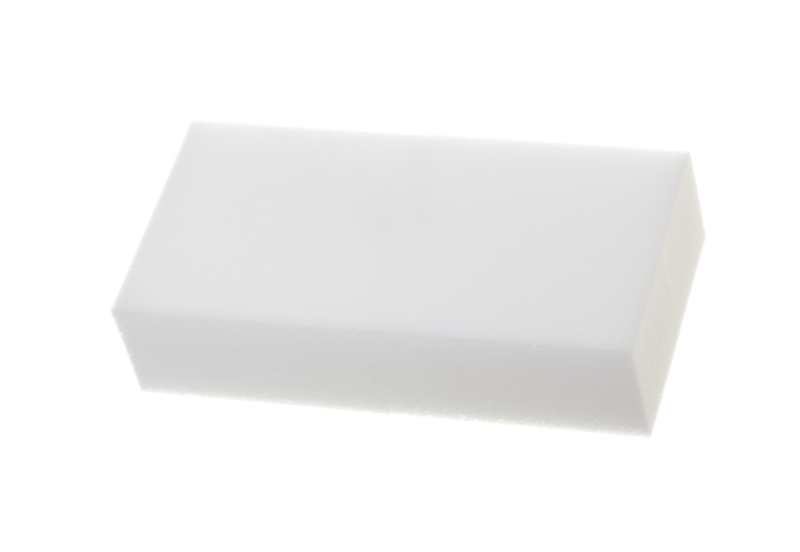Expert Tips to Remove Mould from Window Sills
Posted on 30/09/2025
Expert Tips to Remove Mould from Window Sills
Mould on window sills is a common household concern, especially in areas with high humidity or frequent condensation. Not only is it unsightly, but mould can also impact indoor air quality and contribute to health issues for sensitive individuals. If you're dealing with black, green, or even pink mould patches on your window sills, it's crucial to tackle the problem head-on. This comprehensive guide presents expert tips and proven strategies to remove mould from window sills efficiently, safely, and for the long term.

Understanding the Causes of Mould on Window Sills
Before diving into mould removal techniques, it's wise to understand why mould appears on window sills in the first place. The following factors typically contribute to mould growth:
- Excess Moisture: Persistent condensation or leaks introduce moisture, which mould thrives on.
- Poor Air Circulation: Limited airflow can result in damp, stagnant corners, ideal for mould colonies.
- Lack of Sunlight: Sunlight helps keep spaces dry and less welcoming to mould spores.
- Organic Matter: Dust, dirt, and wood or paint on sills provide nutrients for mould to flourish.
How Dangerous Is Mould on Window Sills?
Some homeowners overlook mould on window sills as a mere cosmetic annoyance. However, mould spores can spread through the air, potentially causing the following issues:
- Allergic Reactions: Sneezing, runny nose, and watery eyes are common symptoms.
- Respiratory Issues: Prolonged exposure may worsen asthma or trigger coughing and wheezing.
- Property Damage: Mould can deteriorate wood, paint, and even window frames over time.
Addressing mould on window sills quickly is vital for maintaining a healthy living environment.
Expert Tips for Effective Mould Removal from Window Sills
1. Gather the Right Tools and Cleaning Solutions
For safe and thorough mould removal from window sills, gather the following essential supplies:
- Protective gloves, goggles, and a mask
- Microfiber cloths and sponges
- Soft-bristle brush or old toothbrush
- Spray bottle
- Household cleaning solutions (see below)
- Garbage bag for disposal
Tip: Always prioritize safety--mould spores can be harmful when inhaled or touched.
2. Choose the Best Mould Removal Solutions
There are several effective options to clean mould off window sills. The following solutions are recommended by cleaning professionals:
- White Vinegar: Undiluted vinegar is acidic and effective at killing over 80% of mould species. Pour it into a spray bottle and saturate the affected area.
- Baking Soda: Mix a tablespoon of baking soda with water to form a paste. Useful for scrubbing and deodorizing surfaces.
- Hydrogen Peroxide (3%): This mild disinfectant kills mould upon contact. Spray and let it sit for 10 minutes before wiping.
- Commercial Mould Cleaners: Specialized products are available for stubborn or recurring infestations. Follow label instructions.
Note: Avoid mixing bleach with ammonia or vinegar, as this creates toxic fumes. While bleach can kill surface mould, it may not penetrate porous materials like wood, making future regrowth more likely.
3. Step-by-Step Guide to Remove Mould from Window Sills
- Ventilate the Area: Open windows and doors to promote airflow and disperse any fumes or airborne spores.
- Wear Protective Gear: Put on gloves, a mask, and goggles to prevent direct contact with mould and fumes.
- Dry the Surface: If moisture is present, blot it away with a dry cloth before applying any cleaning solution.
- Apply Mould Removal Solution: Spray your chosen cleaner generously onto the mouldy areas, ensuring full coverage.
- Let It Sit: Allow the solution to work for at least 10-15 minutes. This breaks down the mould for easier removal.
- Scrub Gently: Use a soft-bristle brush or sponge to scrub the affected sills. Be gentle to avoid damaging paint or wood.
- Wipe Down: Remove loosened mould with a damp microfiber cloth, rinsing and reapplying cleaner as necessary.
- Repeat if Needed: For stubborn areas, reapply solution and repeat scrubbing until the mould is gone.
- Dispose Responsibly: Place used cloths and debris in a sealed bag and dispose of them safely to prevent spore spread.
- Dry Thoroughly: After cleaning, wipe the window sill dry to prevent moisture buildup that encourages new mould growth.
4. Natural Remedies for Cleaning Mould Off Window Sills
If you prefer eco-friendly methods to tackle mould on window sills, try these natural remedies:
- Tea Tree Oil Solution: Mix one teaspoon of tea tree oil with a cup of water. Its natural antifungal properties make it highly effective against mould.
- Lemon Juice: The citric acid in lemons kills mould and leaves a fresh scent. Combine equal parts lemon juice and water, apply, and scrub.
- Grapefruit Seed Extract: A few drops mixed with water works similarly to tea tree oil, with a less intense aroma.
*Natural options are best for frequent, light cleaning but may not be as effective for deep-rooted or stubborn mould problems.
5. Preventing Mould from Returning on Window Sills
Once you've successfully removed mould from your window sills, the next step is crucial: prevention. Experts recommend the following practices to keep your windowsill mould-free:
- Control Humidity: Use a dehumidifier, especially in rooms prone to condensation. Maintain indoor humidity below 60%.
- Ventilate Regularly: Open windows or use exhaust fans, particularly after showers or cooking.
- Address Leaks Immediately: Check for window leaks and seal them promptly.
- Clean Sills Often: Wipe down window sills weekly to eliminate dust and catch early signs of mould.
- Install Double-Glazing: Double-glazed windows reduce condensation and moisture, discouraging mould formation.
- Use Mould-Resistant Paint: If repainting, choose anti-mould or mildew-resistant paint for vulnerable areas.
Addressing Stubborn or Widespread Mould Infestations
If mould growth has spread into porous materials (like wood) or the problem extends beyond one window, it's best to consult professional remediation services. Signs you need an expert include:
- Persistent Odour: A musty smell that remains after cleaning.
- Health Symptoms: Household members suffer from chronic allergies or respiratory issues.
- Large-Area Mould: Patches exceeding one square meter.
- Structural Damage: Wood rot or window frame decay.
*Ignoring widespread mould not only exacerbates health risks but may also lead to costly home repairs.
Frequently Asked Questions about Removing Mould from Window Sills
Can I use bleach to clean mould off window sills?
While bleach can kill surface mould, it may not penetrate into the material and often leaves roots behind, allowing mould to regrow. It may also damage wood finishes and create harmful fumes.
Is mould on window sills dangerous?
Small amounts can often be dealt with safely, but continuous exposure or dealing with large outbreaks should be handled with caution, especially for those with allergies, asthma, or weakened immune systems.
How do I know if the mould will come back?
If moisture issues are not addressed, mould is likely to return. Always fix leaks, condensation, or humidity problems alongside cleaning.
Should I replace window sills with severe mould damage?
If the mould has deeply penetrated the sill or caused rot, replacement may be the safest option to ensure structural integrity and prevent recurring issues.

Expert Advice: Maintenance Tips for Lasting Results
- Inspect Regularly: Check window sills and frames for moisture or mould every few months.
- Upgrade Insulation: Better window insulation reduces condensation, a prime cause of mould.
- Seal Gaps: Use caulk or weatherstripping around windows to prevent drafts and water ingress.
- Clean Curtains and Blinds: Regularly wash or vacuum window coverings, as they can harbour spores.
By following these expert mould removal and prevention tips, your home will stay healthier and your windows retain their appearance for years to come.
Conclusion: How to Remove and Prevent Mould on Window Sills
Dealing with mould on window sills is a manageable DIY task when equipped with the right knowledge and tools. For most homeowners, using simple household cleaners like vinegar or baking soda, in combination with good safety practices, will keep sills spotless. Don't forget--the key to long-term mould prevention lies in fixing leaks, improving ventilation, and managing indoor humidity. For persistent or widespread issues, seeking professional help is always the safest course.
With these expert tips, you can confidently remove mould from window sills and maintain a cleaner, healthier home environment, ensuring that troublesome fungal patches don't return.


